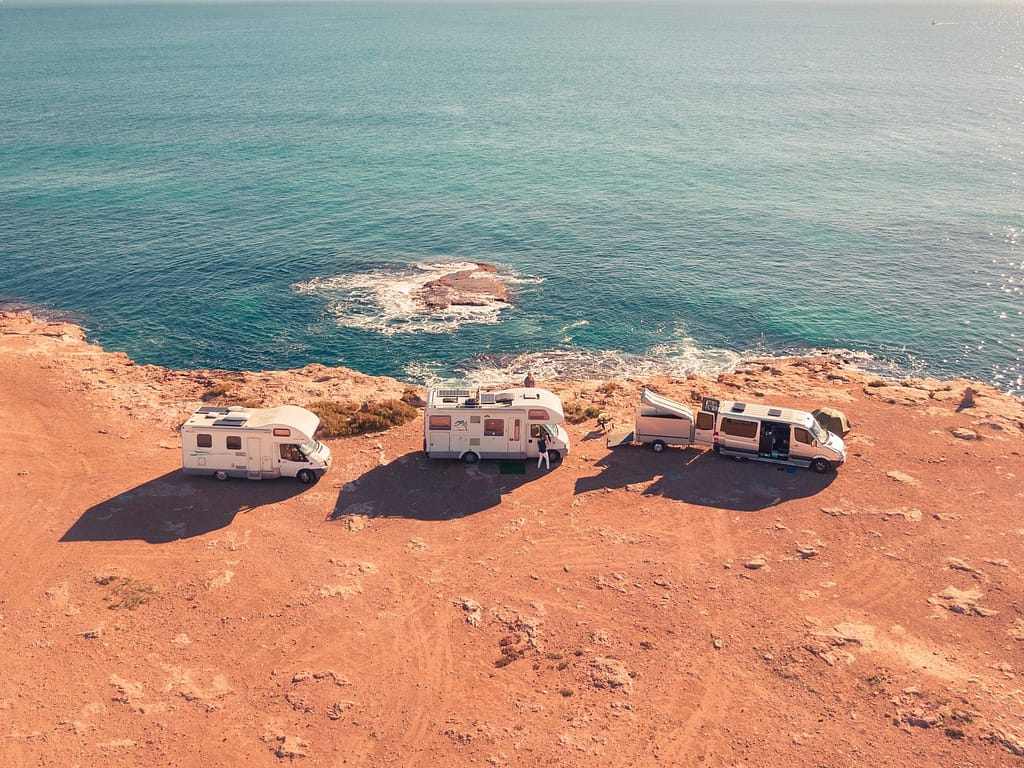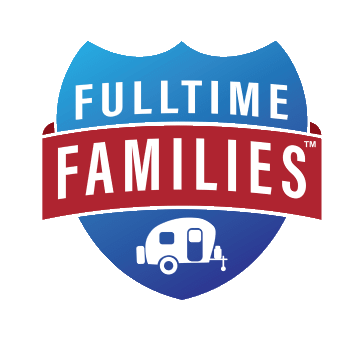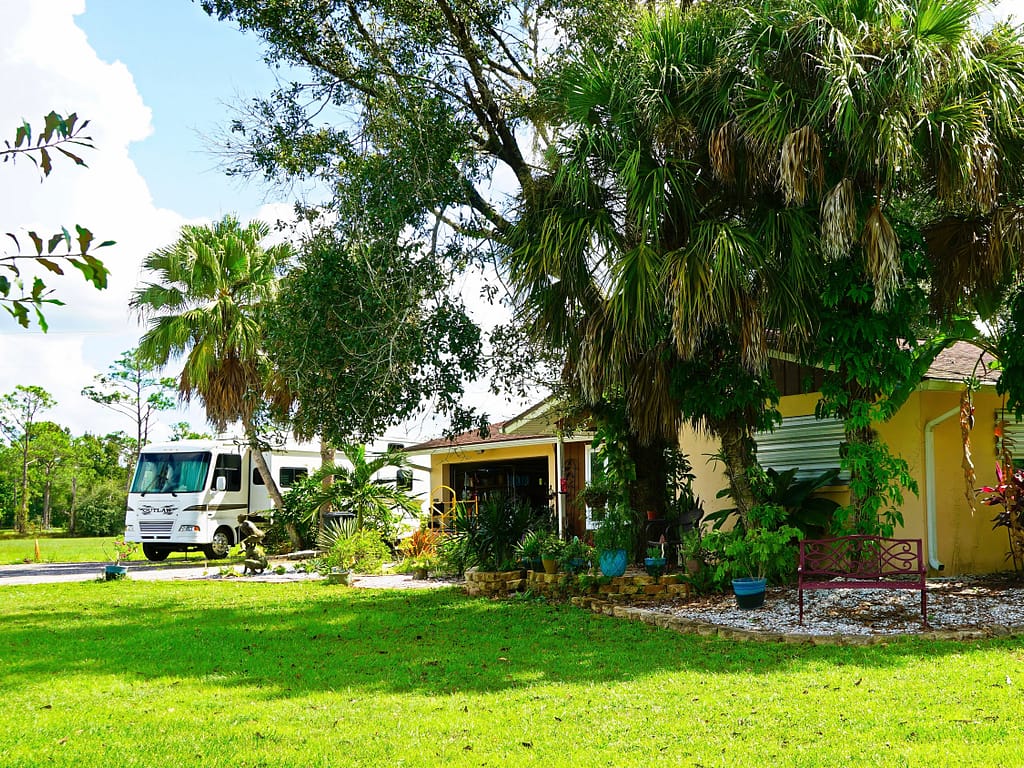This article may contain compensated links, please read our disclaimer for more information.
If you’ve been RVing for any length of time, you’ve probably heard the term “dry camping” here and there. The thing is, those who stick close to the comforts of full-hookup RV parks may not actually know what exactly dry camping is.
In this article, we are going to explore the definition of dry camping and give you some tips for doing some dry camping of your own. Ready? Let’s go!
What is Dry Camping?
First, we’ll ask the question you came here to ask: What is dry camping?
Essentially, dry camping just means camping in your RV without any hookups whatsoever. Some people use the terms “dry camping” and “boondocking” interchangeably, but we’d argue that while boondocking certainly is a form of dry camping, not all dry camping is boondocking.
You see, dry camping can be done in a campground where hookups are unavailable. It can also be done in a Walmart parking lot or in a friend’s driveway. We wouldn’t consider camping in any of these places boondocking per se, since none of them are out in the wilderness (aka the “boonies”), but as long as there are no hookups involved, these are all forms of dry camping.

The Benefits of Dry Camping
The next question? Why in the world would anyone choose dry camping over camping with the comforts of full hookups? We get it. It does sound a little crazy if you’re new to the world of RVing, but trust us when we say there are several good reasons to go dry camping.
Two of the big ones are laid out below.
Camp Anywhere
A willingness to dry camp opens up your options, so you can camp virtually anywhere. This is amazing when you just need to find a place to sleep for one night on a long drive, but is also perfect when you want to camp in a town with no campground or wish to escape into the middle of nowhere.
Save Money
In addition to allowing you to camp anywhere, dry camping is also fantastic because it can save you a ton of money. In most cases, dry camping is free or very low cost. In theory, one could choose to dry camp exclusively and never spend a dime on campground fees.
Finding Places to Dry Camp
If you’re hoping to try dry camping for yourself, you may be wondering where one can find places to dry camping. Fortunately, this is actually very easy to do, but where you look will depend on the type of dry camping experience you prefer.
Below, we’ve outlined the four main dry camping location options and included info on how you can find dry camping spots that fall into each category.
Moochdocking
“Moochdocking” refers to dry camping on somebody’s land or in their driveway. Usually, people will moochdock with family or friends, but it is also possible to find moochdocking spots by joining clubs like Boondockers Welcome and/or Harvest Hosts.
Wallydocking
There is also the option of “wallydocking,” AKA parking lot camping. This involves parking at a business and sleeping for the night, but should never be used for multiple nights in a row.
You can find some parking lot camping options on Campendium, but often it’s best to just call the business you wish to use and ask. Many Walmart, Cracker Barrel, and Cabela’s locations allow overnight parking.
Dry Campgrounds
Some campgrounds do not have hookups. Therefore, you are technically dry camping when using these campgrounds. In most cases, you will still need to pay to stay in a dry campground, but not always. These campgrounds tend to be listed on Campendium or RV Life Campgrounds just like any other campground, and they are usually run by the BLM, Forest Service, National Parks Service, or state parks.
Dispersed Camping
Lastly, there is the option of dispersed camping or boondocking. The best boondocking spots tend to be on government-owned land. You can stop in a Forest Service or BLM office to ask for suggestions, but we actually prefer to use Campendium, Free Campsites, and iOverlander to find these spots on our own.
Things to Know About Dry Camping
Dry camping is great. It tends to be free or very low cost, and allows you the freedom to camp anywhere. What’s not to love? Well, there are some not-so-great things about dry camping, as well as some bits of info you’ll probably want to have before you jump in.
Do Your Research
You can’t park your RV just anywhere. Some places don’t allow overnight parking, and some roads (especially those out in the wilderness) won’t accommodate a big RV. Always do your research before you head to a camp spot, so you don’t end up in a sticky situation.
Always Ask Permission
If you plan to park in a parking lot, make sure you have permission to do so. We recommend calling ahead and asking the manager on duty. Likewise, if you’re staying with friends or family, make sure you don’t overstay your welcome.
Trust Your Gut
If a place doesn’t feel safe or even if it just feels off, move on. It’s important to always trust your gut on these matters. Arriving well before dark is helpful because it allows you time to relocate if that’s what you need to do to stay safe.
Clean Up After Yourself
We want free dry camping to remain an option for future generations of RVers. Therefore, it’s incredibly important that you are respectful and clean up after yourself no matter where you happen to be staying.
Go in Prepared
Dry camping is, by definition, camping without water or electricity. In many cases, it also means camping without access to outside restrooms or showers. Be sure you go in prepared to fend for yourself. A full water tank and battery, a source of electricity, your own food, and roadside assistance in case of emergency are the bare minimum essentials for safe and comfortable dry camping.
Managing Resources while Dry Camping
As mentioned above, because you’ll have no hookups while dry camping, you do need to go in prepared. This means packing what you need, learning how to stretch your resources, and more. Here are some basic tips to get you started.
Reducing Electricity Usage
To make your RV battery reserves last, consider the following tips:
- Change all lights to LED bulbs.
- Avoid using the microwave, air conditioner, and other high power appliances, even if you have the inverter to do so.
Check out this article for tips on keeping cool while dry camping in summer.
Reducing Fresh Water Usage
Stretch that tank of fresh water with the following suggestions:
- Use paper plates and bowls to reduce dishwashing. If they can be reused for multiple meals—like if they were only used to set dry, non-messy foods on—then all the better.
- Wipe out dishes after using, so less rinsing is needed.
- Use Venture Wipes and dry shampoo so you can go longer between showers.
- Find places to shower outside of your RV (local pools, gyms, and truck stops).
- Switch to a composting toilet.
Learn more about RV toilet types here.
Reducing Wastewater
Avoid filling your wastewater tanks by using these options:
- Wash dishes in a plastic tub and dump the water outside, or use that water to flush the RV toilet rather than pulling from the fresh tank.
- Opt for outdoor showers.
Finding Internet Connection
Internet connection can be hard to come by when dry camping in the middle of nowhere. Here are some tips on that front:
- Research your camp spot before you go to check if a connection is available. Campendium is good for this.
- Carry multiple cell plans. We know of people who have Verizon, AT&T, and T-Mobile hotspots to ensure they’re covered as often as possible.
- Use a cell booster.
- Invest in Starlink satellite internet. (Check out Starlink mount options.)
Find more RV internet tips here.
Creating Electricity
When it comes time to charge those batteries back up, you can choose to use a generator or solar panels. We recommend a combo of both plus a decent battery bank, along with an inverter for running appliances that require AC power.
Finding Fresh Water
Fresh water fillups can be found in a variety of places. Many gas stations have a spigot they will allow you to use (although you should ask if it’s potable). There is also the option of filling up at a campground before heading out on a dry camping venture. Sometimes dump stations will offer potable water.
Discarding Wastewater
Speaking of dump stations, you will need a place to dump wastewater while dry camping. Dump stations can be found using SaniDumps or the aforementioned Campendium website. Of course, if you’re heading directly to a campground you can just dump there.
More tips for managing resources can be found in our 17 Quick Tips for Off-Grid Camping article.
Clearly, dry camping is a wonderful option to have, and something every RVer should try at least once. Who knows? You may find you love the freedom and cost savings and choose to dry camp more often than not!
Join Fulltime Families
Fulltime Families Members get access to the best resources, community and discounts.
Fulltime Families is a participant in the Amazon Services LLC Associates Program, an affiliate advertising program designed to provide a means for sites to earn advertising fees by advertising and linking to amazon.com, amazon.co.uk, amazon.ca. Amazon and the Amazon logo are trademarks of Amazon.com, Inc. or its affiliates.


